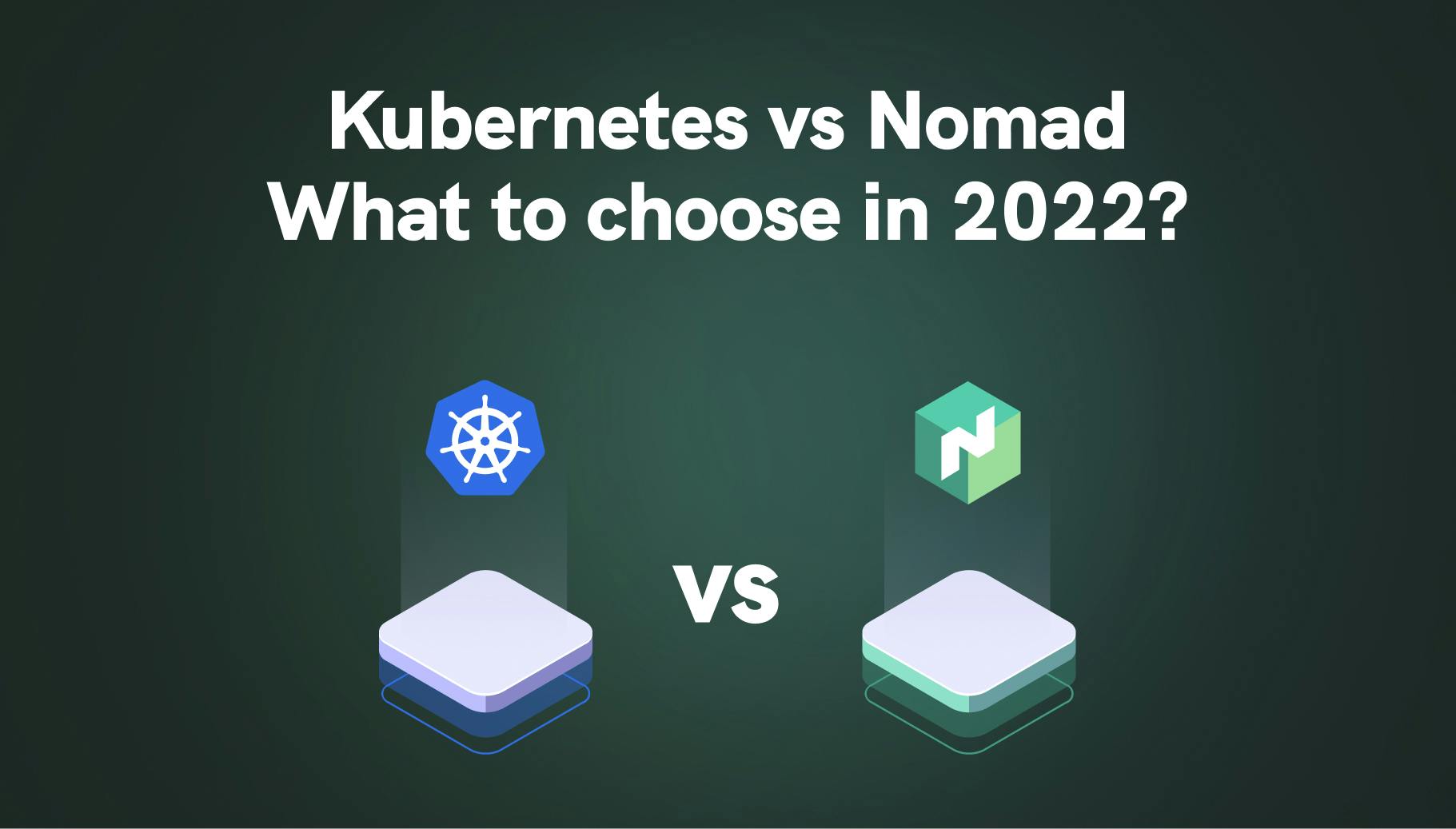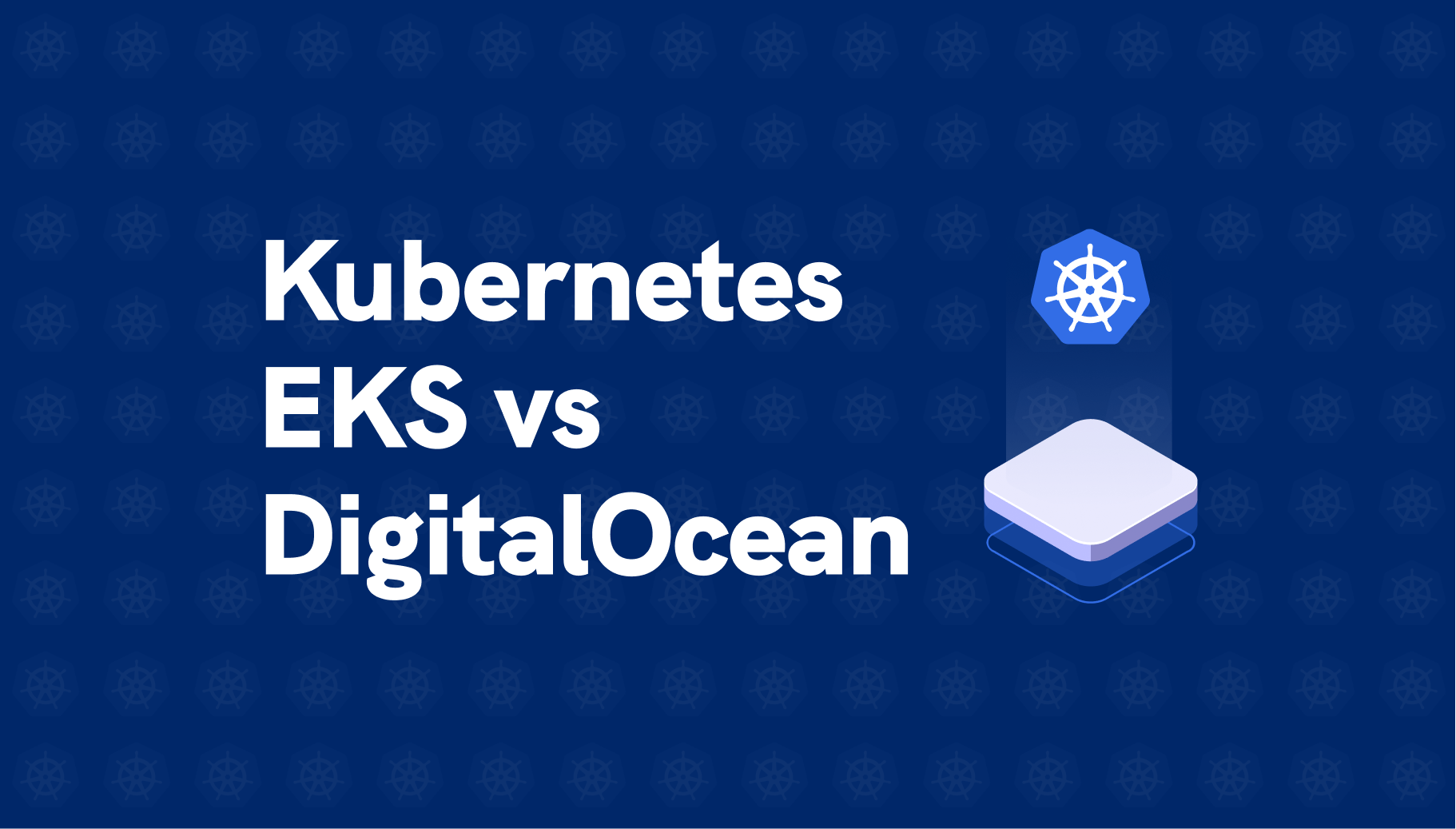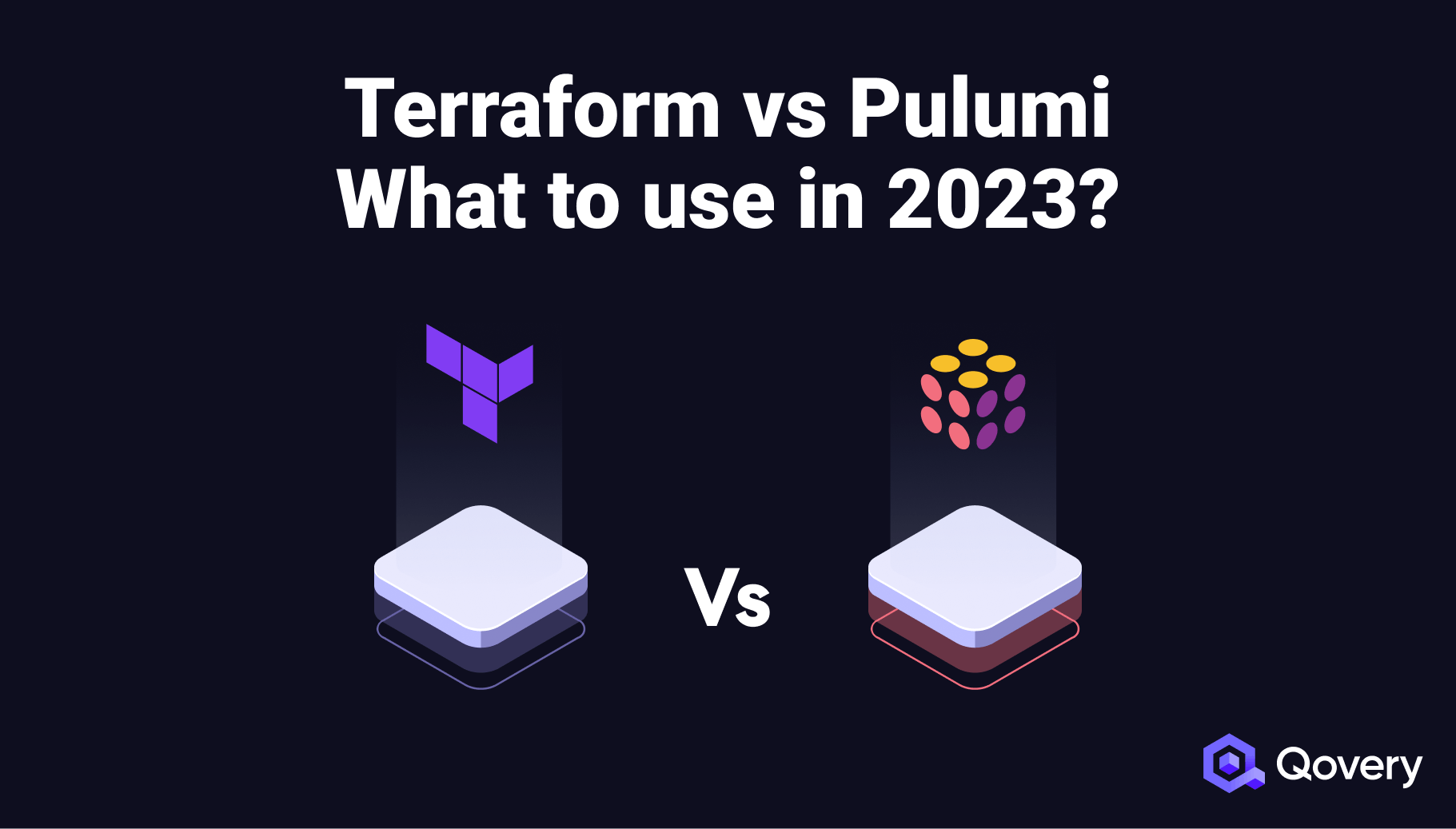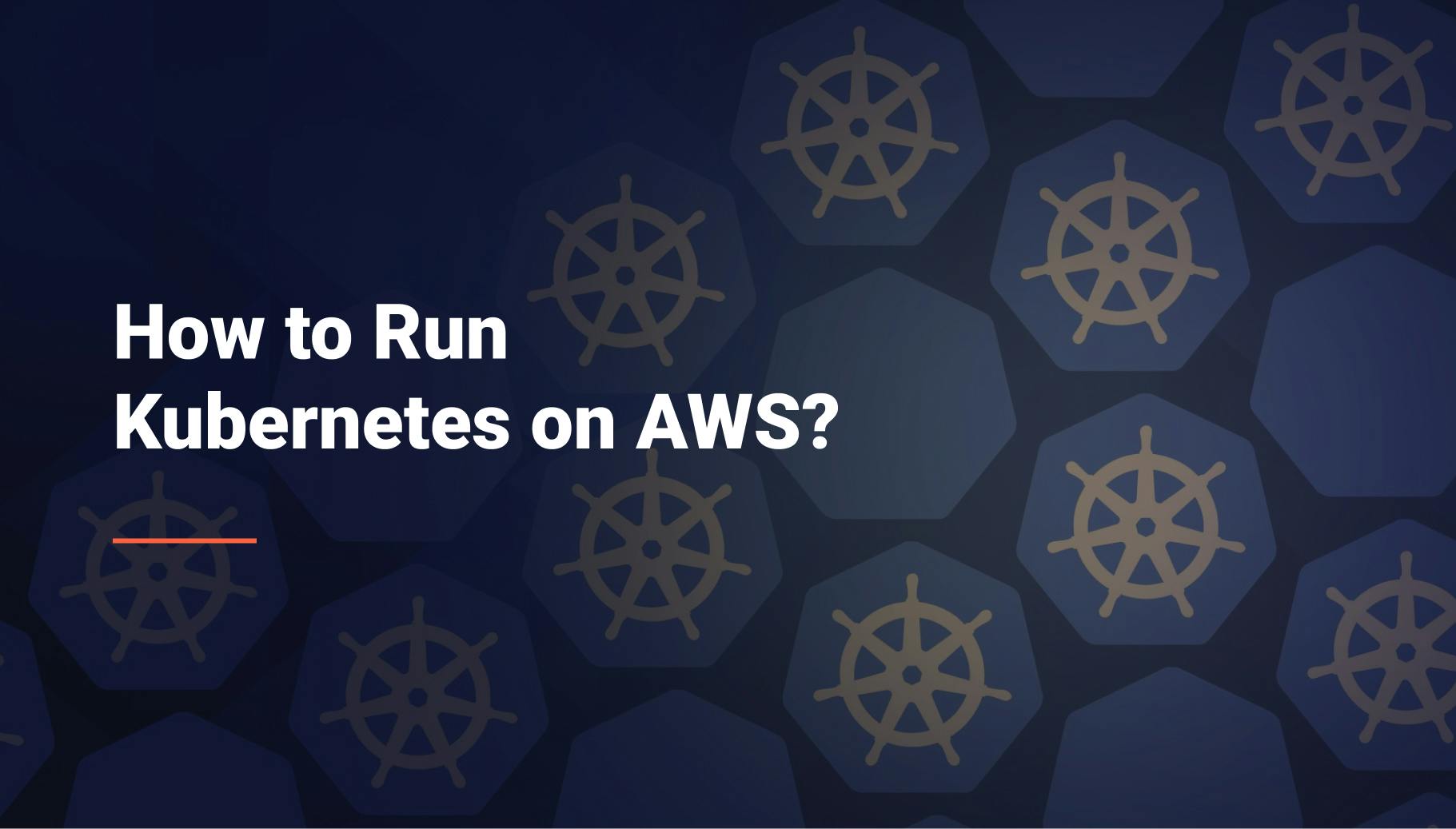Kubernetes vs Nomad: What to Choose in 2022?
Kubernetes has become an enormously popular choice for containerized applications since its 2014 launch. Many software developers rely on the tool, which is now in v1.23.1. However, there are other choices on the market for container orchestration.
One such tool is Nomad, originally launched in 2015. Generally pitched as an alternative to Kubernetes, Nomad, which most recently released v1.2, promotes itself as a simple, flexible option for software teams.
This article will offer a comparison of the two container orchestration tools, so you can decide which will work best for your applications in 2022.

Romaric Philogène
March 3, 2022 · 6 min read
#How Does Containerizing Help Developers?
Containers are runtime environment virtualizations based on lightweight Linux distributions. They are popular virtualization solutions at the operating system level. Think of them as lighter virtual machines, detached from the underlying infrastructure.
For applications inside the container, all the resources of the machine are available, but the operating system only shows them the allocated resources and possibly the applications running in other containers. With this “trick,” you can easily create multiple containers that run one or more programs, each of which has a subset of the computer’s overall resources at its disposal. Applications can run separately or simultaneously, either interacting or not interacting with each other.
Since each container holds a single application or microservice, you can easily find yourself operating hundreds of containers, perhaps even on different clouds. This makes it impossible to manage them manually and requires automation throughout the container lifecycle. The solution is a process called orchestration, which simplifies operations, increases the resilience of the solution, and improves overall security.
Container orchestration accelerates software development because containers allow you to write code consistently, whether you’re working in your local environment or the public cloud. Since they’re light and easy to shut off, containers allow you to optimize the use of resources.
Managing this type of environment is complex, though, and it only becomes more complex as you increase the number of containers and applications running. Along with that complexity comes one of the major benefits of containerization: unlike a traditional environment, in which the stability of programs and installations is measured by the overall duration of their uptime, container orchestration excels in the dynamic management of rapidly changing workloads.
#Comparing the Tools
This article will compare Kubernetes and Nomad based on the following factors.
- Cloud provider support: Do the major cloud providers support the tool? What quality of support do they offer?
- Complexity and maturity: How easy is the orchestrator to install and configure?
- Workload types: Is the orchestrator designed to manage Docker containers, other containers, and non-container applications?
- Performing upgrades and rollback: Which upgrade strategies are supported? Is there a possibility of rolling updates, in which old application instances are gradually replaced with new ones? How easy is rollback?
- Fault tolerance: What happens when one of the nodes fails?
- Support: How comprehensive is the community support?
#What Both Tools Support
Following are some of the features that are supported by both Kubernetes and Nomad.
- Ingress: Both Kubernetes and Nomad use ingress for load balancing traffic. Although Nomad does not offer load balancing functions to forward requests to nodes where the application is deployed, it integrates well with Nginx or HAProxy with automatic configuration based on Consul.
- Access control: Kubernetes and Nomad support access control through access control lists (ACLs). In Nomad this is done using tokens. Kubernetes supports namespaces by default, which can be effectively used to separate development environments. In Nomad, this functionality is available only in the Enterprise version.
- Autoscaling: Nomad supports horizontal autoscaling of applications, while Kubernetes does the same in pods. Kubernetes also supports autoscaling based on observed CPU usage, memory usage, and a range of other custom metrics. A similar solution in Nomad, which consists of building recommendations for CPU and memory based on the analysis of historical data, is available exclusively in the Enterprise version.
- Automatic fallback: Kubernetes and Nomad support automatic fallback to the latest stable version in case of deployment failure. Both store the deployment history. There are many more configurable options in Kubernetes, including the maximum number of unavailable pods, the allowed increase in the number of pods, the minimum time during which a pod must become available, and the maximum duration of tasks.
#Kubernetes vs. Nomad
This is how the two container orchestration tools compare to other criteria.
#Cloud Provider Support
Kubernetes clearly has the upper hand on cloud support, since various major cloud providers offer easily configurable, managed Kubernetes systems. Google Cloud has its own Kubernetes Engine. Even though it has its own container orchestration system called Amazon ECS, Amazon also offers the EKS managed Kubernetes service. Azure offers AKS, while IBM offers a managed Kubernetes service called IBM Cloud Kubernetes Service.
Nomad is supported by most big cloud providers like AWS, Azure, Google Cloud, and DigitalOcean, but deploying it on most of these platforms can be difficult and time-consuming. For example, deploying Nomad on AWS can take around thirty-five minutes.
#Complexity and Maturity
Both Kubernetes and Nomad can be deployed on various operating systems. However, Kubernetes requires different configurations, depending on the OS, which is why its manual installation is more difficult. Installing Nomad is much easier than Kubernetes. Nomad is available as a precompiled binary and as packages for various operating systems. You can also build Nomad from the source, which is an easy process.
The greater complexity of Kubernetes is due to several factors. It’s an older tool than Nomad, and it provides all the features you need to run containerized applications, including cluster management, service autodiscovery, and security. Nomad, though, focuses only on cluster management and scheduling.
#Supported Workloads
While Kubernetes is focused on Linux containers, Nomad handles a variety of workloads. It supports virtualized, containerized, and standalone microservices and packaged applications in Docker, Java, and QEMU, among others. This allows you to orchestrate not only with containers or virtual machines but also to run, for instance, heavy Java applications on nodes.
#Fault Tolerance
By default, the behavior of both systems is similar. In Kubernetes, load balancing services detect failed pods and remove them. Kubernetes has a minute to identify a failed node and up to five minutes to push pods to another node. Nomad has about the same default values but in Kubernetes, using the kubelet and control manager options, the pods can realistically be forced out to another workable node within ten seconds.
#Support
Kubernetes and Nomad both are open source. However, Kubernetes, which is managed by the Cloud Native Computing Foundation (CNCF), is very open and offers solid community support including a forum, Stack Overflow troubleshooting, GitHub projects, and video tutorials. Nomad offers a community forum including office hours and webinars. Its direction and development, though, are closely controlled by HashiCorp, which emphasizes its Enterprise version.
#Conclusion
Kubernetes is a self-contained orchestration tool with many built-in services that provide all the features you need to run a container-based application. It has the more impressive contributor community and cloud support, providing a rich toolkit and a large number of out-of-the-box solutions. However, it is difficult to set up manually and is designed for containerized applications only.
In contrast, Nomad is easy to install and operate because it only focuses on cluster management. It also supports various types of workloads, but it offers limited functionality, which requires the installation of third-party tools to solve tasks that Kubernetes implements by default.
If your applications require additional features and you’re comfortable taking the time to learn the tool, then Kubernetes may be the better choice. However, if you prefer a more straightforward workflow without added functionality, then Nomad may be right for your applications. Ultimately, which tool you choose depends on your use case and your ability to implement the tool into your production cycle. Be sure to take the above factors into account when making your decision for 2022.
Your Favorite DevOps Automation Platform
Qovery is a DevOps Automation Platform Helping 200+ Organizations To Ship Faster and Eliminate DevOps Hiring Needs
Try it out now!

Your Favorite DevOps Automation Platform
Qovery is a DevOps Automation Platform Helping 200+ Organizations To Ship Faster and Eliminate DevOps Hiring Needs
Try it out now!


